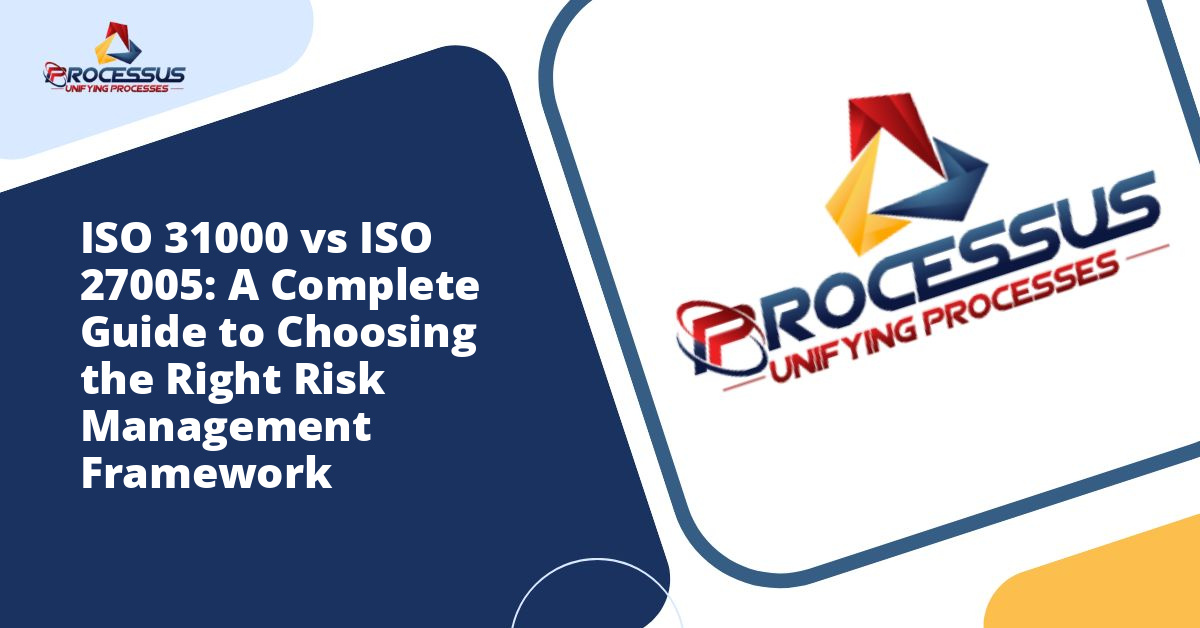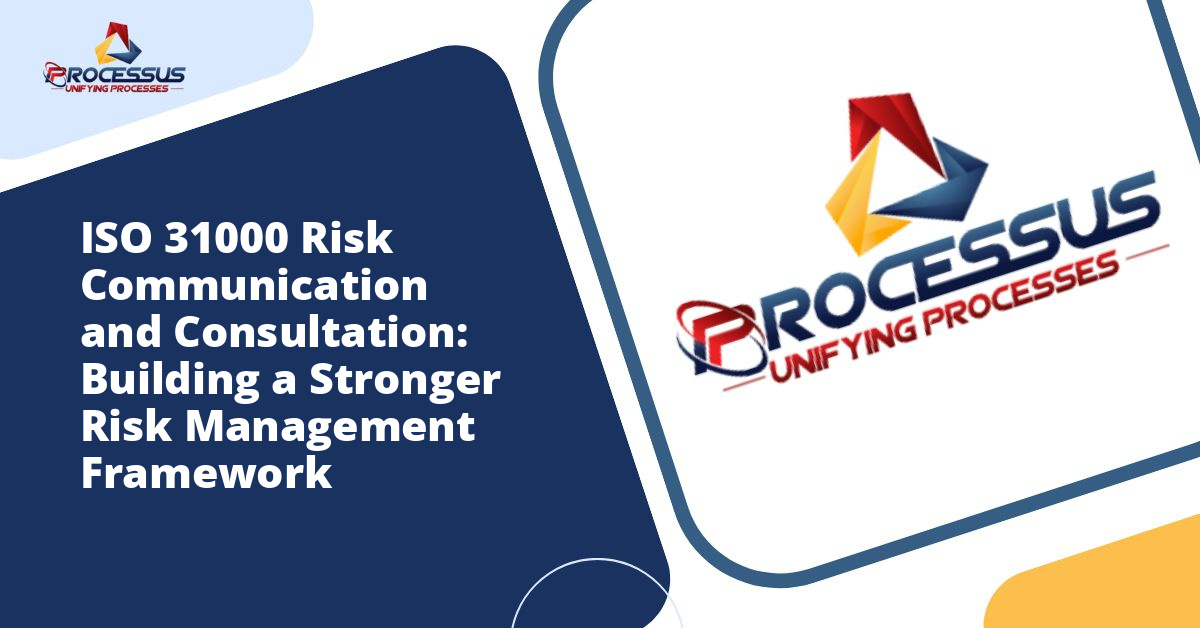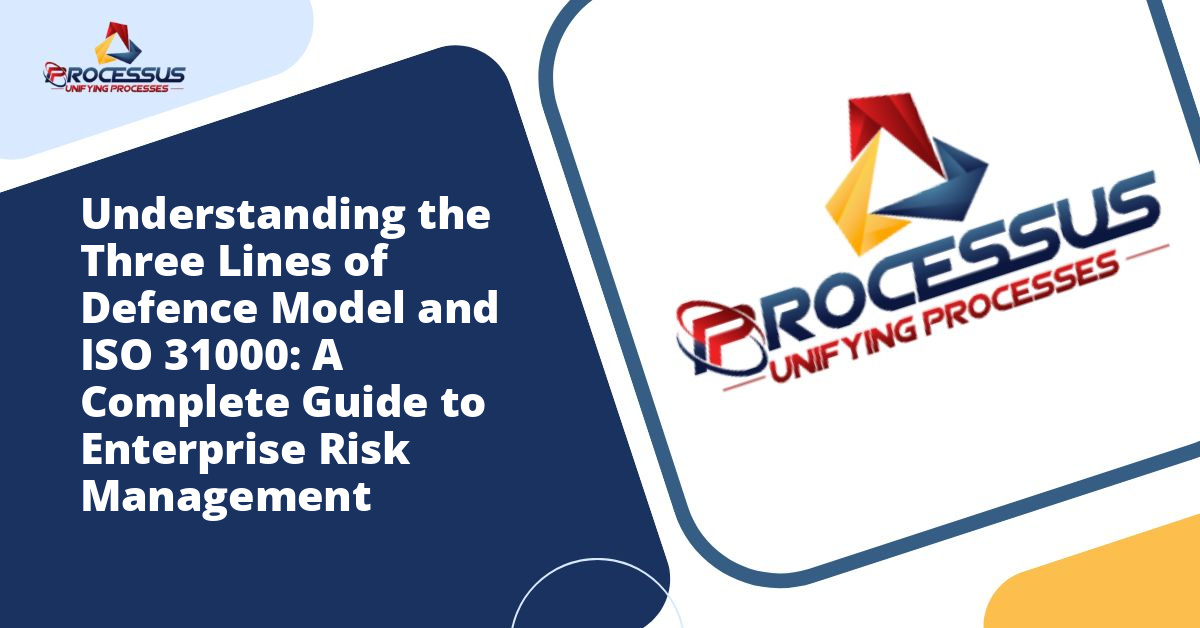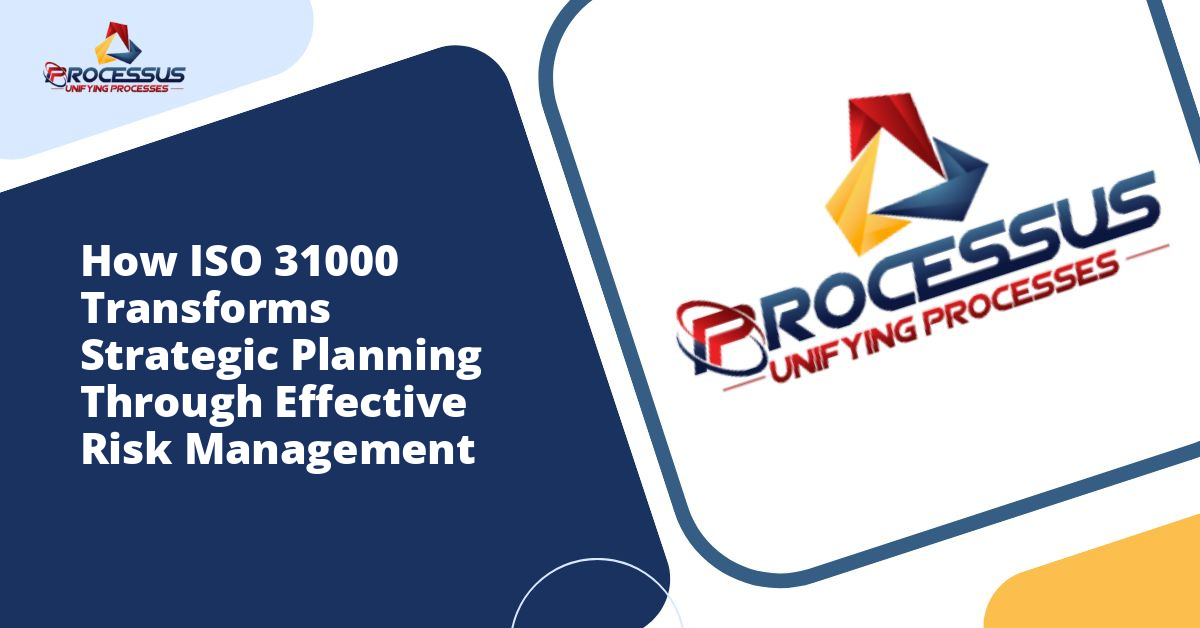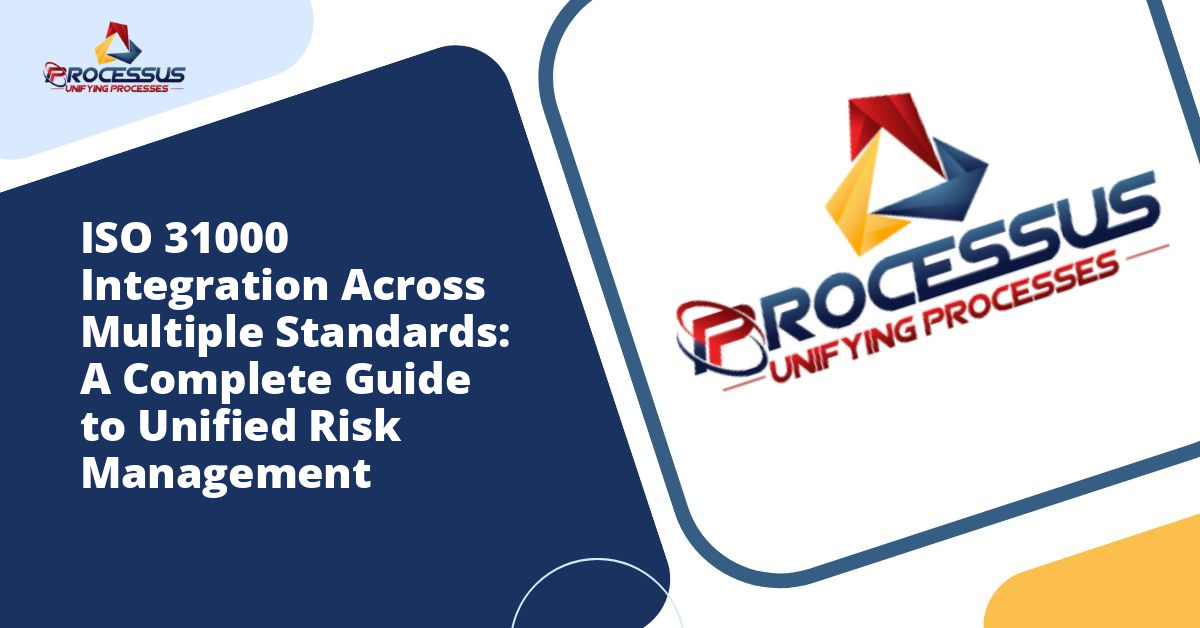Organizations today face an increasingly complex landscape of risks that threaten their operations, reputation, and bottom line. From cybersecurity breaches to operational failures, the need for structured risk management has never been more critical. Two internationally recognized frameworks stand out in this field: ISO 31000 and ISO 27005. While both address risk management, they serve different purposes and apply to distinct organizational needs. Understanding the differences between these frameworks is essential for selecting the right approach for your organization.
Understanding Risk Management Frameworks
Before diving into the specifics of ISO 31000 and ISO 27005, it is important to grasp what risk management frameworks actually do. These frameworks provide structured methodologies for identifying, assessing, and mitigating risks that could impact organizational objectives. They offer a common language and systematic approach that helps organizations make informed decisions about resource allocation and risk treatment strategies. You might also enjoy reading about ISO 31000 Risk Management Framework Implementation: A Complete Guide for Organizations.
Risk management frameworks are not merely theoretical constructs. They represent years of collective wisdom from industry experts, practitioners, and researchers who have studied how organizations succeed or fail in managing uncertainty. When properly implemented, these frameworks help organizations move from reactive crisis management to proactive risk anticipation and mitigation. You might also enjoy reading about Understanding Risk Appetite and Tolerance: A Complete Guide Using ISO 31000 Framework.
What is ISO 31000?
ISO 31000 is an international standard that provides principles, framework, and process guidelines for managing risk in any organization. First published in 2009 and revised in 2018, this standard takes a comprehensive approach to risk management that applies across all industries, sectors, and organizational types. Whether you run a manufacturing company, a healthcare facility, or a financial institution, ISO 31000 offers applicable guidance.
Core Principles of ISO 31000
The standard is built on eight fundamental principles that should be reflected in how an organization manages risk:
- Integrated: Risk management should be an integral part of all organizational activities, not a separate function
- Structured and comprehensive: A systematic and comprehensive approach contributes to consistent and comparable results
- Customized: The framework and process should be tailored to the organization’s context and risk profile
- Inclusive: Appropriate and timely involvement of stakeholders enables their knowledge and views to be considered
- Dynamic: Risks emerge, change, and disappear as internal and external contexts evolve
- Best available information: Inputs should be based on historical and current information, as well as future expectations
- Human and cultural factors: Human behavior and culture significantly influence all aspects of risk management
- Continual improvement: Risk management should be continually improved through learning and experience
ISO 31000 Framework Components
The framework consists of three main components that work together to enable effective risk management. The first component focuses on leadership and commitment, ensuring that top management actively supports and promotes risk management throughout the organization. The second component involves integration into organizational processes, making risk management part of the organizational culture rather than an isolated activity. The third component emphasizes continual improvement, creating mechanisms for learning and adaptation as the organization evolves.
The ISO 31000 Process
The risk management process outlined in ISO 31000 follows a logical sequence. It begins with establishing the context, which involves understanding the internal and external environment in which the organization operates. This is followed by risk assessment, which includes identification, analysis, and evaluation of risks. Next comes risk treatment, where organizations decide how to address identified risks through various strategies such as avoiding, accepting, transferring, or mitigating them. Finally, the process includes communication and consultation throughout all stages, along with monitoring and review to ensure ongoing effectiveness.
What is ISO 27005?
ISO 27005 is an information security risk management standard that provides guidelines specifically for managing risks related to information security. Published as part of the ISO 27000 family of standards, ISO 27005 focuses exclusively on protecting information assets from security threats. This standard is designed to support the implementation of an Information Security Management System (ISMS) based on ISO 27001.
Purpose and Scope of ISO 27005
Unlike the broad application of ISO 31000, ISO 27005 has a narrow and specialized focus. It addresses risks to the confidentiality, integrity, and availability of information within an organization. This includes digital data, paper documents, intellectual property, and any other form of information that has value to the organization. The standard provides detailed guidance on conducting information security risk assessments and implementing appropriate controls to protect information assets.
Key Elements of ISO 27005
ISO 27005 follows a process similar to general risk management but applies it specifically to information security contexts. The standard emphasizes context establishment by identifying the scope of the risk management process, including which information assets need protection. It provides detailed methodologies for identifying information security risks, including threats, vulnerabilities, and potential impacts. The standard also offers guidance on analyzing and evaluating risks based on their likelihood and consequences to information security objectives.
Risk Treatment in ISO 27005
The risk treatment phase in ISO 27005 involves selecting appropriate security controls from ISO 27001 Annex A or other sources to address identified risks. Organizations can choose to modify risks by implementing controls, retain risks by accepting them based on risk appetite, avoid risks by eliminating the risk source, or share risks through insurance or outsourcing arrangements. The standard emphasizes documenting risk treatment decisions and maintaining a risk treatment plan that specifies how controls will be implemented.
Comparing ISO 31000 and ISO 27005
While both standards address risk management, they differ significantly in scope, application, and methodology. Understanding these differences helps organizations determine which framework best suits their needs or how to use both frameworks together effectively.
Scope and Application
ISO 31000 takes a holistic view of organizational risk. It applies to strategic risks, operational risks, financial risks, compliance risks, and any other category of risk that could affect organizational objectives. The standard is intentionally generic to accommodate diverse industries and organizational types. A construction company uses ISO 31000 to manage project delays and safety risks, while a hospital might apply it to clinical risks and patient safety concerns.
ISO 27005, by contrast, focuses exclusively on information security risks. Its application is limited to threats and vulnerabilities affecting information assets. Organizations use ISO 27005 when they need to protect sensitive data, comply with privacy regulations, secure their IT infrastructure, or implement an ISMS according to ISO 27001 requirements. The standard is specifically designed for information security professionals and those responsible for protecting organizational information.
Methodology and Approach
Both standards follow risk management processes that include identification, analysis, evaluation, and treatment of risks. However, ISO 27005 provides more prescriptive guidance for information security contexts. It includes specific techniques for identifying information security threats and vulnerabilities, detailed methods for assessing information security impacts, and direct references to security controls that can be implemented as risk treatments.
ISO 31000 offers a more flexible and principles-based approach. It provides high-level guidance that organizations adapt to their specific circumstances. The standard does not prescribe specific risk assessment techniques or treatment options, allowing organizations to choose methodologies that fit their culture, resources, and risk profile.
Certification and Compliance
An important distinction between these standards relates to certification. ISO 31000 is a guidance standard, not a requirements standard. Organizations cannot become certified to ISO 31000. Instead, they use the standard as a reference for developing their own risk management approaches. Some organizations may seek third-party validation that their risk management practices align with ISO 31000 principles, but this is not the same as formal certification.
ISO 27005 also does not offer direct certification. However, it supports ISO 27001 certification, which is a requirements standard for information security management systems. Organizations seeking ISO 27001 certification often use ISO 27005 as the methodology for conducting required risk assessments. The risk assessment documentation created following ISO 27005 guidance becomes evidence for ISO 27001 certification audits.
Integration with Other Standards
ISO 31000 is designed to work alongside other management system standards. Organizations can integrate it with quality management systems (ISO 9001), environmental management systems (ISO 14001), or any other management framework. The standard’s generic nature makes it compatible with various industry-specific risk management approaches.
ISO 27005 is specifically designed to complement ISO 27001 and other standards in the ISO 27000 family. It provides the detailed risk management guidance that ISO 27001 references but does not fully elaborate. Organizations implementing ISO 27001 typically rely on ISO 27005 for conducting the risk assessments required for certification.
Choosing the Right Framework for Your Organization
Selecting between ISO 31000 and ISO 27005 depends on several factors related to your organizational needs, objectives, and risk profile. In many cases, organizations benefit from using both standards in complementary ways rather than choosing one over the other.
When to Choose ISO 31000
ISO 31000 is the appropriate choice when your organization needs a comprehensive enterprise risk management framework. If you are establishing risk management practices across your entire organization or integrating risk management into strategic planning and decision-making processes, ISO 31000 provides the necessary guidance. The standard works well when your risk concerns extend beyond information security to include operational, strategic, financial, and reputational risks.
Organizations without existing risk management structures benefit from starting with ISO 31000. The standard helps create a common risk language across departments and establishes fundamental principles that apply to all risk types. Senior executives looking to embed risk-aware culture throughout their organizations find ISO 31000 particularly valuable because it addresses leadership commitment and organizational integration.
When to Choose ISO 27005
ISO 27005 is the right choice when your primary concern is protecting information assets. If your organization handles sensitive customer data, faces regulatory requirements for data protection, or depends heavily on information technology for operations, ISO 27005 provides specialized guidance for managing these specific risks. The standard is particularly valuable for organizations pursuing ISO 27001 certification, as it offers the detailed risk assessment methodology required for certification.
Information security teams, IT departments, and data protection officers find ISO 27005 especially useful because it speaks their language and addresses their specific challenges. Organizations in industries with high information security requirements, such as financial services, healthcare, telecommunications, and technology companies, typically implement ISO 27005 as part of their information security programs.
Using Both Frameworks Together
Many mature organizations implement both ISO 31000 and ISO 27005 in complementary ways. They use ISO 31000 as their overarching enterprise risk management framework, providing consistent risk management principles and processes across the organization. Within this broader framework, they apply ISO 27005 specifically to information security risks, taking advantage of its specialized guidance and detailed methodologies.
This integrated approach offers several advantages. It ensures consistency in risk management terminology and processes while allowing for specialized expertise in information security risk management. Organizations can aggregate information security risks identified through ISO 27005 with other enterprise risks for strategic decision-making at the executive level. This integration provides a complete picture of organizational risk exposure.
Implementation Considerations
Implementing either framework requires careful planning, resource allocation, and organizational commitment. Several factors influence successful implementation regardless of which standard you choose.
Organizational Culture and Maturity
Organizations with mature risk management practices can implement either standard more easily than those starting from scratch. However, even organizations new to formal risk management can successfully adopt these frameworks with proper support and commitment. The key is matching the implementation approach to organizational maturity. Starting with pilot projects in specific departments or focusing on critical risks can build momentum before expanding to organization-wide implementation.
Resource Requirements
Both standards require dedicated resources for effective implementation. Organizations need personnel with appropriate expertise, time allocation for risk assessment and treatment activities, and budget for tools, training, and potential consulting support. ISO 27005 typically requires specialized information security expertise, while ISO 31000 implementation may involve a broader range of organizational functions. Planning for these resource needs upfront prevents implementation delays and ensures sustainable risk management practices.
Training and Awareness
Successful implementation depends on building risk management capability throughout the organization. This requires training programs that help employees understand risk concepts, processes, and their roles in managing risks. For ISO 31000, training should reach all organizational levels, from executives to front-line staff. ISO 27005 training typically focuses on information security professionals, IT staff, and those responsible for information assets, though general awareness training for all employees remains important.
Technology and Tools
While neither standard requires specific technology, appropriate tools can significantly enhance implementation effectiveness. Risk management software helps organizations document risks, track treatment actions, and report on risk status. For ISO 31000, enterprise risk management platforms provide capabilities for managing diverse risk types across the organization. ISO 27005 implementation often benefits from information security risk management tools that include threat libraries, vulnerability databases, and control frameworks aligned with ISO 27001.
Measuring Success
Organizations should establish metrics to evaluate the effectiveness of their risk management practices regardless of which framework they implement. Success indicators might include the percentage of identified risks with documented treatment plans, the time required to respond to emerging risks, the frequency of risk-related incidents, or the level of risk awareness among employees. Regular reviews of these metrics help organizations continually improve their risk management practices and demonstrate value to stakeholders.
Conclusion
Choosing between ISO 31000 and ISO 27005 is not about selecting the superior standard but rather identifying which framework best addresses your organizational needs. ISO 31000 provides comprehensive guidance for managing all types of organizational risks, making it suitable for enterprise-wide risk management. ISO 27005 offers specialized expertise for information security risk management, making it essential for organizations with significant information security concerns.
Many organizations find that both standards play valuable roles in their risk management approach. They implement ISO 31000 as their overarching framework while using ISO 27005 for specialized information security risk management. This integrated approach leverages the strengths of both standards while maintaining consistency in risk management principles and processes.
The most important consideration is not which standard to choose but rather the commitment to implementing structured, systematic risk management practices. Both ISO 31000 and ISO 27005 provide proven frameworks that help organizations anticipate, understand, and respond to risks effectively. With proper implementation and ongoing commitment, either framework can significantly enhance organizational resilience and support long-term success.
As you evaluate these frameworks for your organization, consider your specific risk profile, regulatory requirements, organizational maturity, and strategic objectives. Consult with risk management professionals, seek input from stakeholders across your organization, and consider starting with pilot implementations before expanding to full organizational adoption. With the right framework and committed implementation, your organization can build robust risk management capabilities that protect value and enable confident decision-making in an uncertain world.

